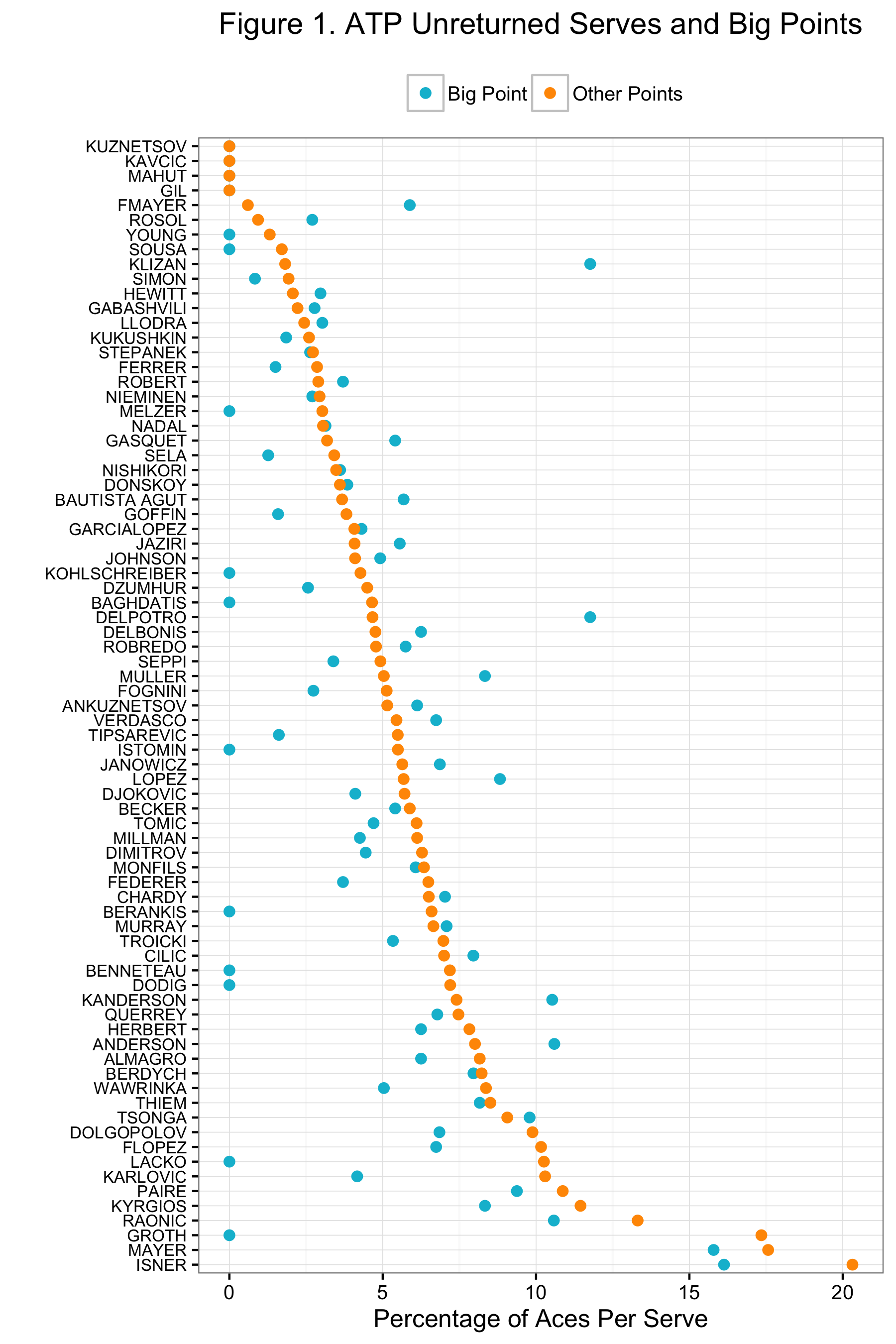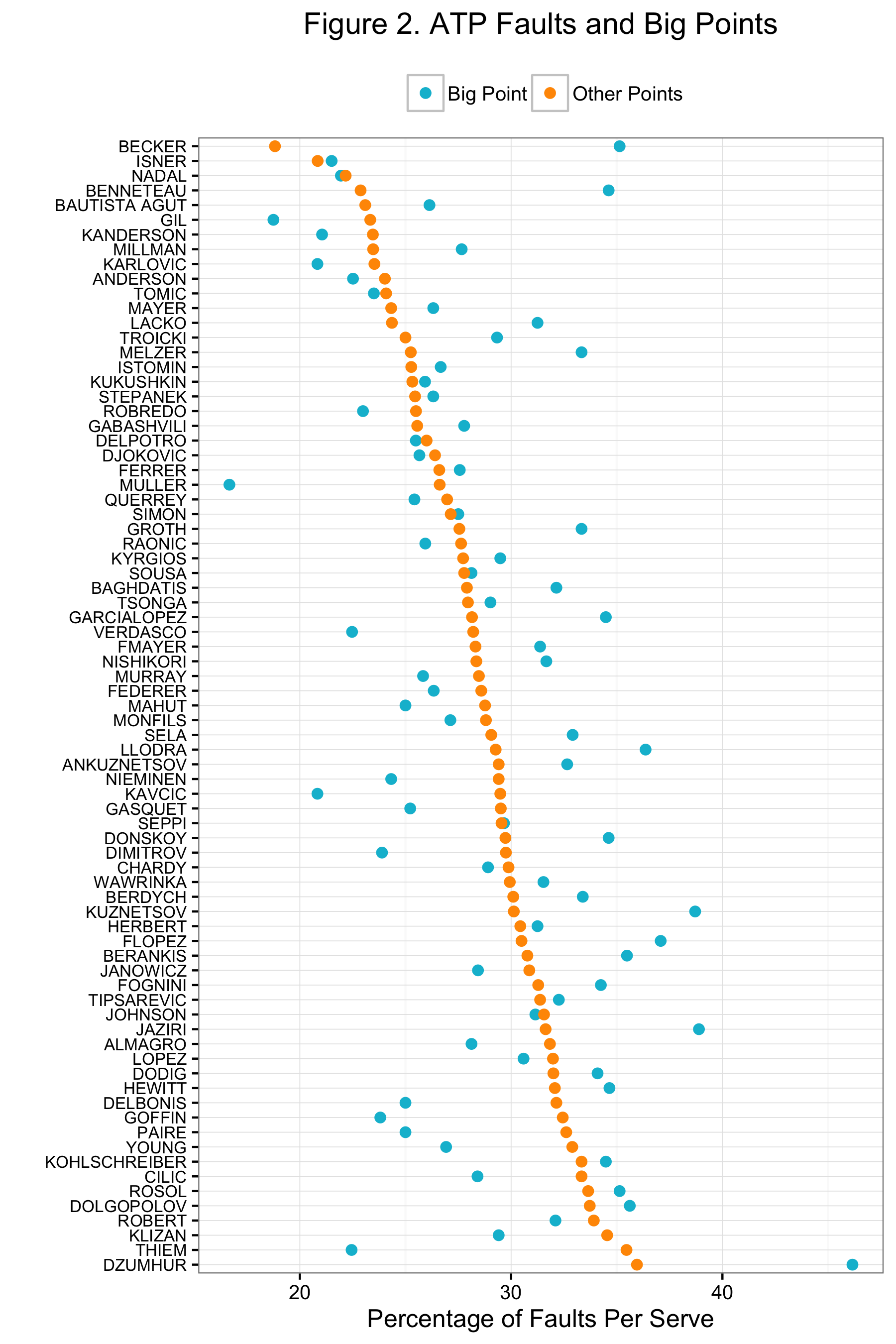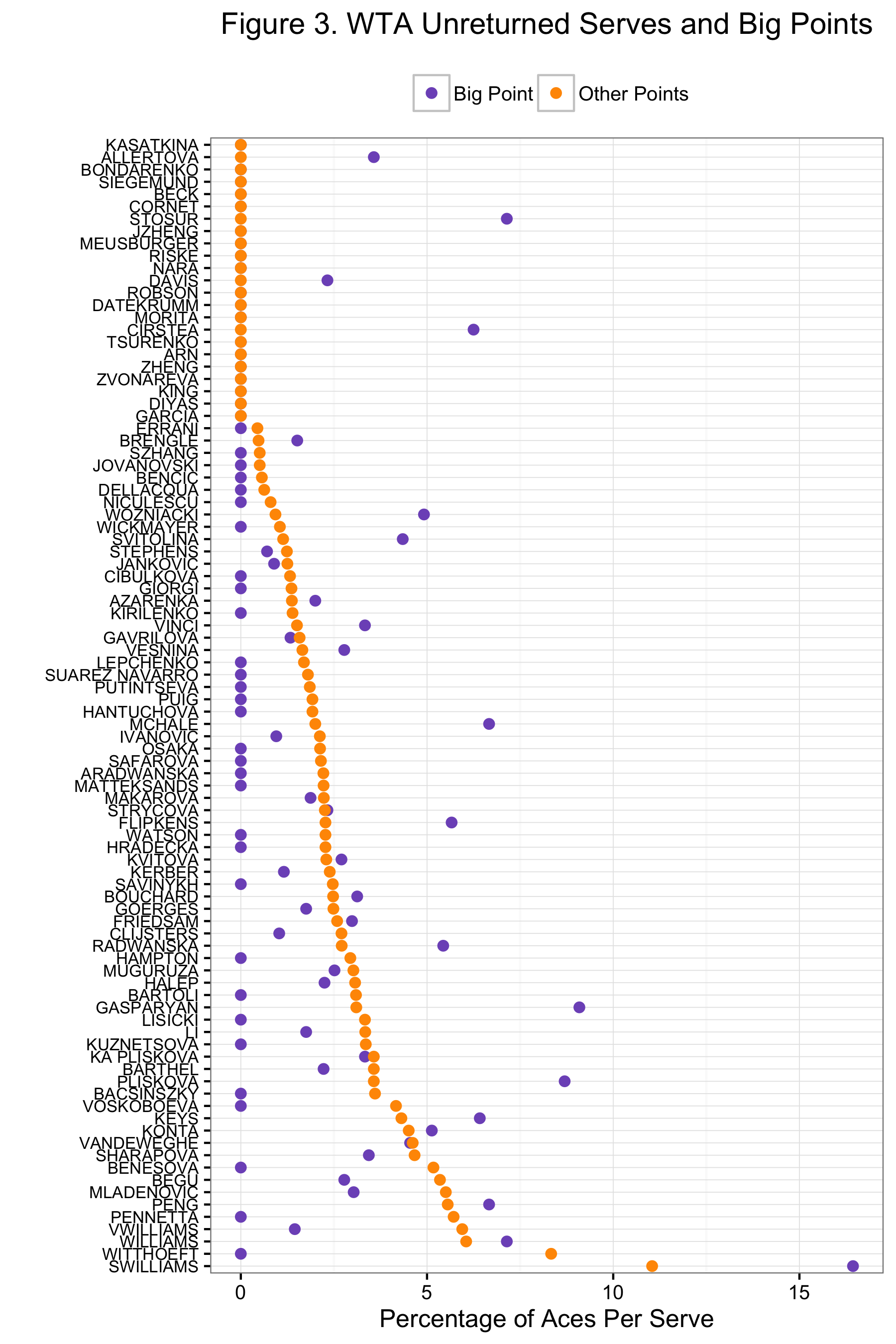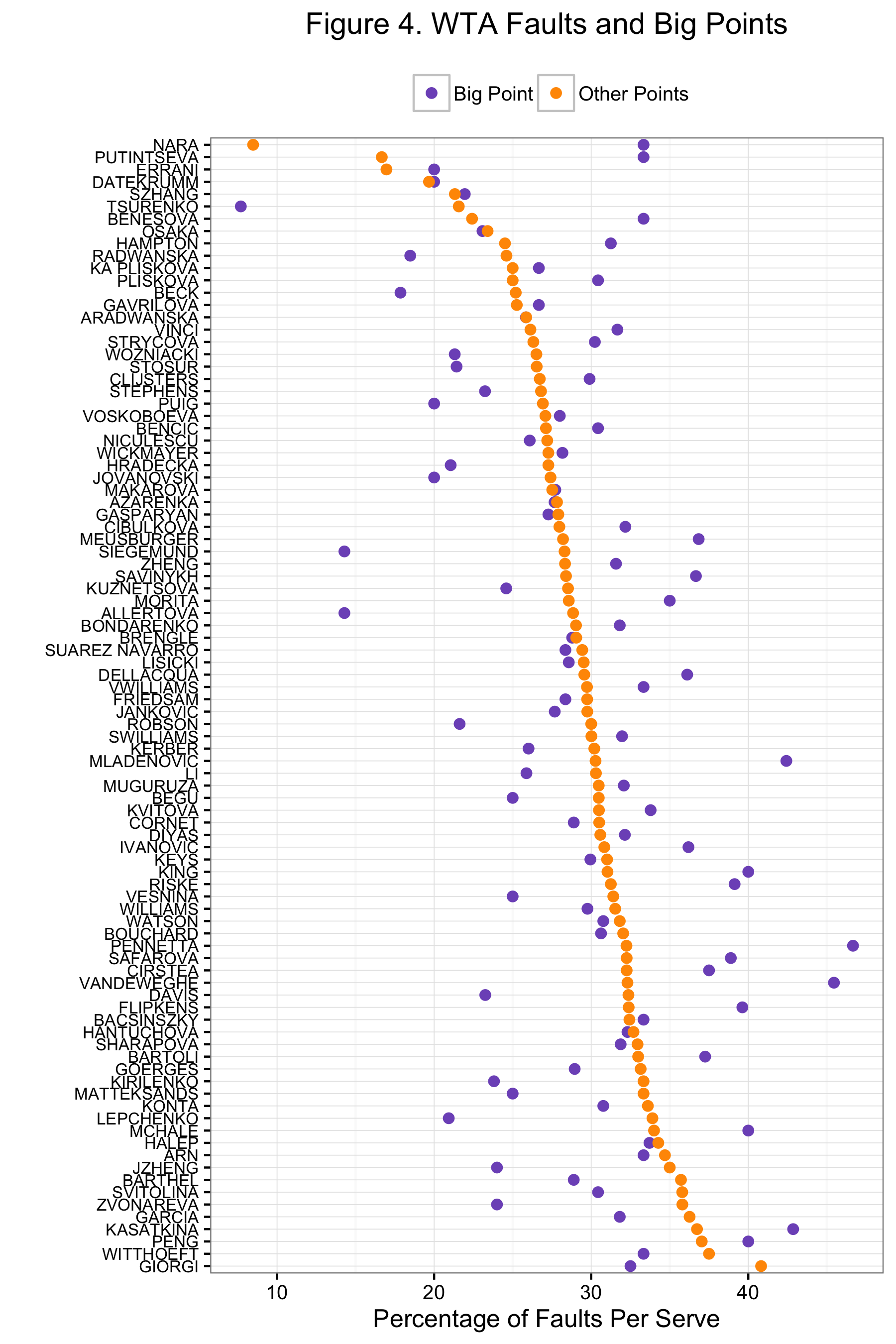Klaassen & Magnus's 22 Myths of Tennis— Myth 15
17 Jun 2016Choking is one of the most fascinating phenomena in sport. 2016 provided us with a spectacular example of a choke when Jordan Spieth made a quadruple-bogey on hole 12 of the Augusta Masters, setting into motion the loss of a near-certain win on the final day on those hallowed links.
Although we may not ever see a meltdown of that magnitude again for years to come, it still serves as a reminder of the role of pressure in competition. It shows us that even the most talented stars and greatest champions (as tennis fans should all be well aware of since the 2015 US Open) can falter under the weight of expectation.
The next in our review of Klaassen and Magnus’ 22 myths of tennis is concerned with the adjustments players make under pressure. K&M argue that, when the heat is on, tennis players play more conservatively. Let’s see how they tested this idea and what they found.
Myth 15 “Players play safer at important points”
With myth 15, K&M introduce the idea of “playing it safe” in tennis. This is the idea of a player consciously choosing a less risky shot in some situations. Although straightforward to describe, risk-taking is not so easy to measure in tennis. If we really wanted to know what risk a player was taking with a particular shot, we would have to know how often they were and were not successful with the shot they intended to go for. But without a player-specific trove of shot types and intentions, classifying risk is tricky.
K&M try to deal with this by focusing on risk-taking on serve, the one shot type where players get two chances and the most freedom to take the shot they believe will be the best choice.
Last week’s post discussed how optimal service performance is a balancing act between effectiveness and risk. This week’s analysis focus on the risk side of that equation and how the pressure of a situation influences the risks players take.
To get at this question, K&M look at the frequency that a serve is good and the importance of the point, using Carl Morris’ definition of importance. If myth 15 is correct, we would expect more serves to be good in a more important situations, as this would suggest that serves take less risk in big situations. Their results suggest that there are fewer aces and fewer double faults at important points.
K&M conclude “that players serve more conservatively under pressure, in line with the hypothesis.”
Revisiting Myth 15
There isn’t much detail about the actual shift in riskiness that K&M found in Analyzing Wimbledon. So I was curious to see whether the same pattern holds for the current cohort of players and to what extent.
Using shot-level data for 5 years of the Australian Open, I looked at the change in unreturned serves (aces or otherwise unreturnable) and faults across 40,000 serves of ATP players and 27,000 serves of WTA players. The matches are third round or later.
In this analysis “big points” for the server were defined as break points, any point in a tiebreak, and any point in a set-deciding game for the server. In this way, we capture both the pressure when a player is threatened with a break of service and the pressure of closing out a set/match when in a winning position.
The first plot below shows how the frequency of unreturnable serves shifted for each serve in big-point situations compared to all other situations. The points are ordered so that the servers with the fewest rate of aces on regular points are at the top and the servers with the highest rate of aces are at the bottom. Overall, there is a 1 percentage point decrease in the frequency of unreturnable serves on big points compared to regular points.
However, one of the intriguing things about Figure 1 is what it tells us about how variable this pattern is from server-to-server. There is so much variation. A player like Del Potro, for example, is an unusually sharp-server in big situations. Although there is less precision in making conclusions about individual player tendencies (Mahut, for example, only has one match in the data and it was his 2012 AO match against Djokovic), this does suggest that an overall average might not be particularly meaningful when thinking about player risk-taking on important points.

An overall pattern is even less clear when we look at the frequency of faults. There is even more noise and player-to-player variation here than with aces/unreturnable serves (Figure 2).

When we look at the rate of unreturnables on the women’s side, we see the opposite overall effect. For the WTA, there is actually an average increase in unreturnable in big situations by 2 percentage points. As with the men’s analysis, this summary accounted for the variable number of serves available for each player and shouldn’t be influenced by some players having a smaller sample size of serves than others.
It is unclear how this matches up with K&M’s findings as they don’t report a separate breakdown for the men’s and women’s tours.

Like with ATP servers, there was no consistent pattern on faults for WTA servers when under more or less pressure (Figure 2). Player-to-player variability is more of the norm than any other finding.

Summary
A more recent look at risk-taking on serve suggests that “playing it safe” in big situations might not be a universal tendency and is much more of a player-dependent phenomena than previously thought. Still, it might also be that, when it comes to measuring a player’s conservatism in shot selection, aces and faults might be too crude. Both of these measures ignore shot difficulty and opponent quality, for example, which we can expect are each critical factors to understanding player patterns in their service strategy and its success.
We have a way to go before closing the chapter on serving under pressure in tennis.
If you liked this story, share it with your followers or follow this site @StatsOnTheT on Twitter.
